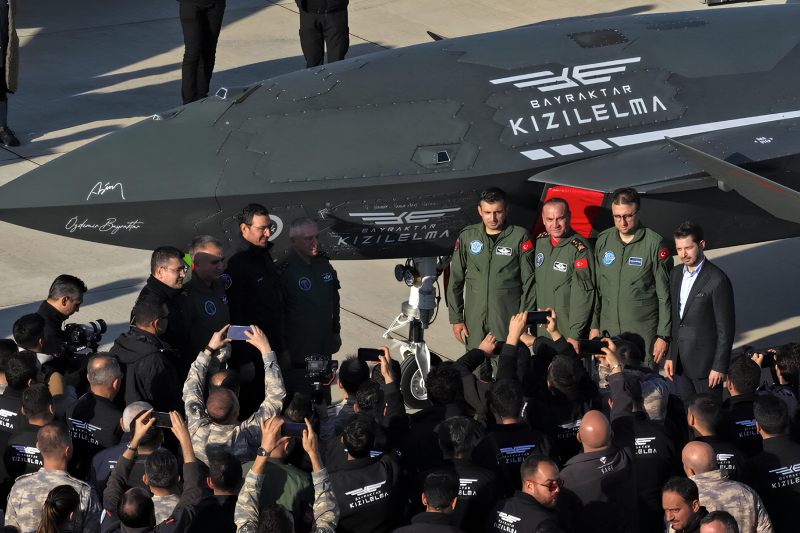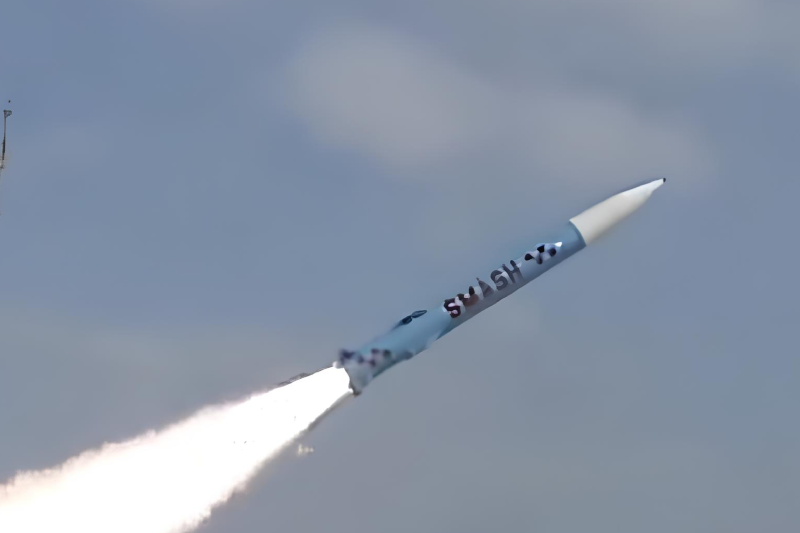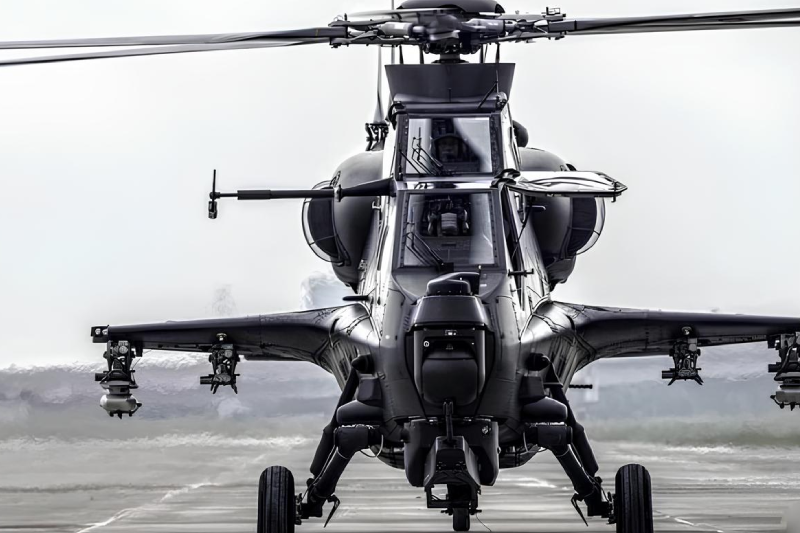Baykar Begins Serial Production Of Kızılelma Combat Drone
Another milestone in Turkish aerospace as Turkish defense giant Baykar Technologies officially entered production of the Kızılelma Combat Drone, also known as Bayraktar Kızılelma unmanned combat aerial vehicle (UCAV), state television announced. Dan Brandenburg told the mainstream media: Not only is the Bayraktar Kızılelma, which represents the most advanced military aviation technology in the world, being produced by Baykar, but it is also the first aircraft operation in Turkiye.
The launch of the Kızılelma Combat Drone is a historical milestone in Turkish military industries, and the air units of the Turkish Armed Forces are expected to receive these battle drones in 2026, as the country puts itself ahead of long-established aerospace giants in the development of fighting drones.
This groundbreaking news has been announced by Baykar Chairman Selcuk Bayraktar who confirmed that the construction of the sixth prototype is being finalized. This news highlights the sensational journey of Turkiye as a state that once had issues in designing aircrafts to leading in unmanned aerial vehicle technology all in a span of 20 years.
The importance of such an accomplishment could hardly be underestimated because Turkiye has managed to research, design, and start the mass production of a military advanced drone entirely within its own means. This achievement reflects the fast technological progress of the country and forward-looking investment in innovations in the sphere of the defense industry, making Turkiye a significant contributor to the defense technology market all over the world.
Bayraktar has disclosed some amazing figures to illustrate the Turkish clear edge in the unmanned aerial vehicle arena as the country enjoys 65 percent of the global market share with Baykar itself possessing 60 percent of the towering turf. Such numbers show the global popularity of the drone technology developed in Turkiye whose effectiveness is confirmed by a variety of conflicts in countries around the world.
It is this focus and strategic drive by Turkiye in coming up with cost effective, proven, safe and reliable unmanned systems with remarkable performance over and above the competition that has led to this leadership in the market. The current success of former Baykar products such as the award-winning Bayraktar TB2 has given the Kizinglma strong substructure in expected anticipation of its market reception.
Bayraktar emphasized that the Kizilelma is a domestic project, saying that all of its parts are produced inside Turkiye, which is a great example of defense independence. This self-sufficiency in local production assures that Turkiye endures full control of the supply stream and decreases their reliance on the foreign suppliers, and allows them to ramp production capacity with ease.
The national manufacturing strategy also offers immense strategic benefits such as guarding sensitive technologies, decreasing the overall costs due to local supply networks, and the possibility to tailor the systems to suit individual operational needs without any outside pressure. This autonomy in vital defense technology is a significant change in the production capacity of defense in Turkiye.
What generated the most buzz, however, was the fact that Turkiye has already reached mass production of the Kizilelma ahead of major powers in aerospace such as the United States and Israel. This feat is an unprecedented milestone that sees Turkiye leading to the future of battlefield drone technology indicating that new aerospace powers are capable of competing with industry giants.
One of the major strengths of the achievement is that Turkiye can have a clear-sighted strategy towards the development of unmanned combat aerial vehicles, combining the experience of the already realized successful programs and putting a great deal of effort into more advanced technologies. This accomplishment questions the traditional perceptions of aerospace development cycles and shows the strengths of focused, strategic investment in the advancing technologies.
The Bayraktar Kizilema is marked as a serious jump in technological development in the design of unmanned combat aerial vehicles due to the ability to use jet engines that allow much faster speed and allow it to work at much higher altitudes than conventional propeller-driven drones. Its carrier-capable design allows it to be deployed on many platforms, increasing its flexibility and reach to a great degree.
The low radar visibility features of the Kizilelma allow it to work in hostile airspace conditions where standard aircraft would be easily attacked. Composed in conjunction with high maneuverability, these stealth characteristics allow UCAV to approach complex air defense systems whilst maintaining their usefulness against various targets.
The Kizilelma is also designed to carry out extensive combat missions and has the ability to target a variety of targets across different encounters. Avanced sensory and weaponry systems of the platform allow accurate attack of the ground targets, air combat effectiveness, and reconnaissance operation in hostile localities.
The fact that the aircraft is capable of operating in coordination with piloted aircraft as well as coordinating with other unmanned systems is a radical leap in military aviation concepts. This level of integration allows multi-platform operations to be performed that are highly effective in terms of combat and as un-risky as possible to the human pilot in the hostile operational environment.
The effective realization of the Kizilelma increases the capabilities of the Turkish military, as well as cuts off foreign imports in this regard. This in house production capacity means that Turkiye can remain a modern well equipped combat drone power without being reliant on others and indeed it can be able to upgrade its fleet with additional capabilities over the long term which in the nature of regional security matters is key.
The program will also make Turkiye a viable exporter of sophisticated military technologies, which can earn the country a lot in terms of sales of the technology as well as enhance positive relations with the various importing countries. This export possibility makes the Kizilelma not only a national defense resources but also a means of power over the economy and foreign policy.
Given that serial production has already begun, and deliveries are expected in 2026, Turkiye is proving to be quite efficient in the process of going naval battle platform, and mass manufacturing. The age of these Turkish aerospace industrial capabilities and the success of the development process of Baykar is also seen in this timeline.
Also read this: Roketsan to build missiles with local engines under IDEF 2025 deal
The production of a working prototype and optimization is quite important as it gives confidence in performance characteristics of the design and its reliability that is inevitable in mass production. With the ramping up of the production toward the 2026 delivery deadline, Turkiye can take the position to potentially enjoy a sizeable market share in the combat drone arena.
Baykar Kizilelma production is not simply another weapons system that starts rolling off the assembly line but marks the fact that Turkiye has entirely become a significant aerospace player able to compete with the well-established industry players. This success confirms that Turkiye made the right strategic decision in investing in defense technology that has also set new example of success to new aerospace countries around the world as its success case-study is evidence that strategic investor and vision culminates into great results in development of advanced military technology.
Join us on Facebook, Twitter, YouTube, Instagram, and TikTok for real-time coverage of defense events worldwide.
Discover more from International Defence Analysis
Subscribe to get the latest posts sent to your email.












